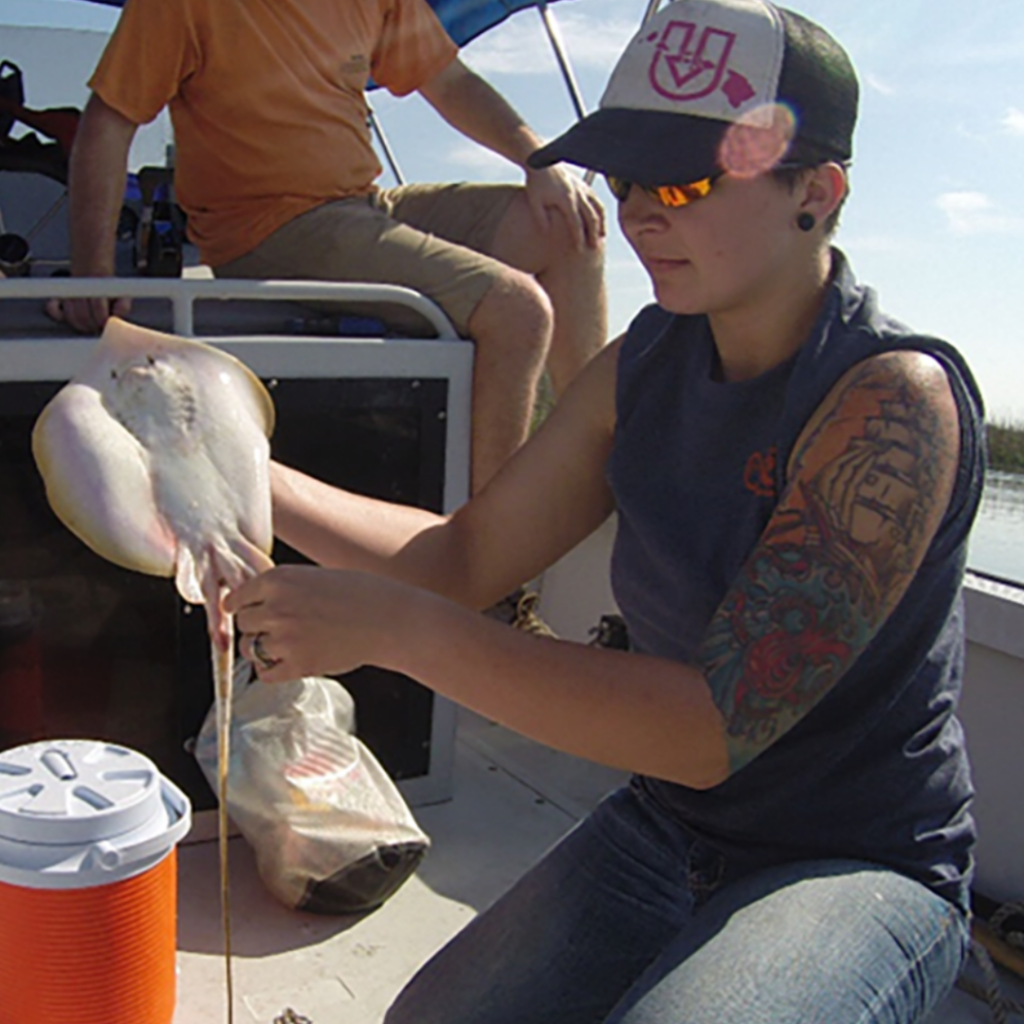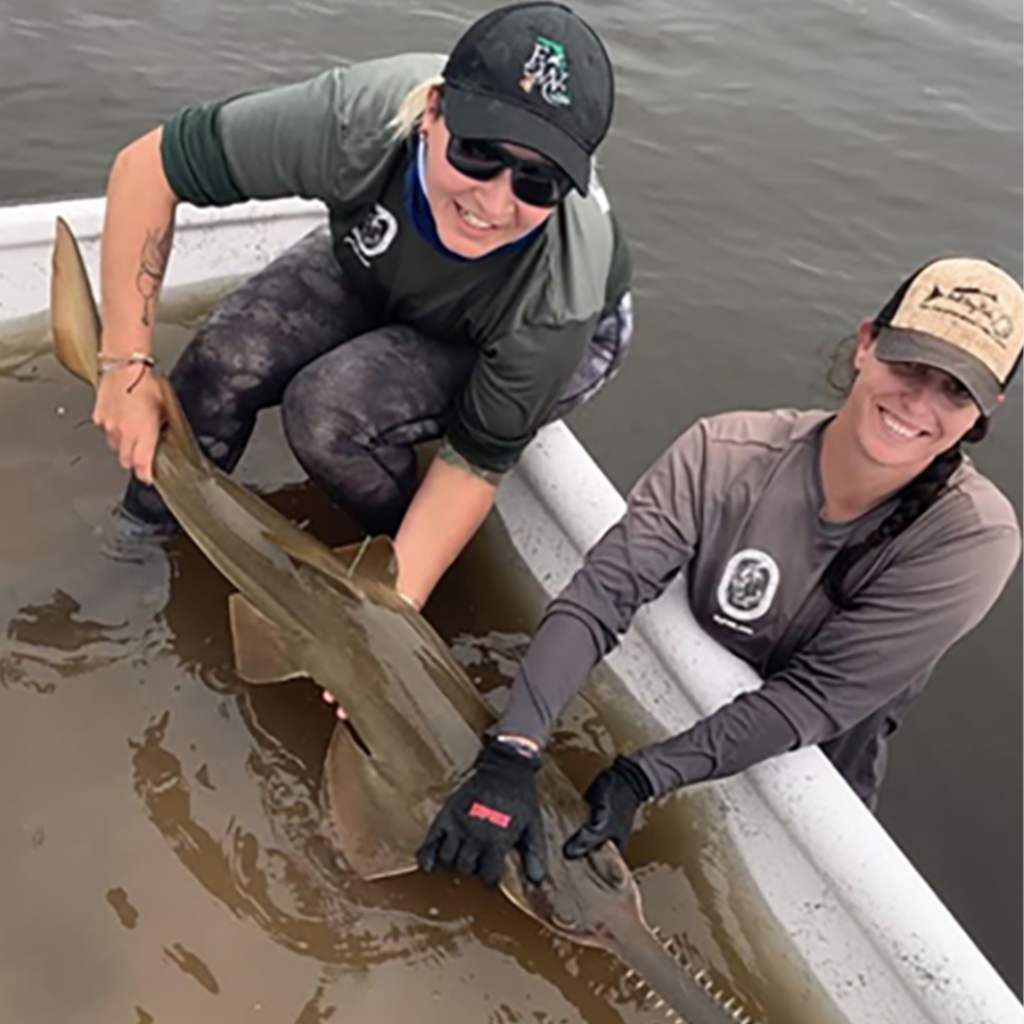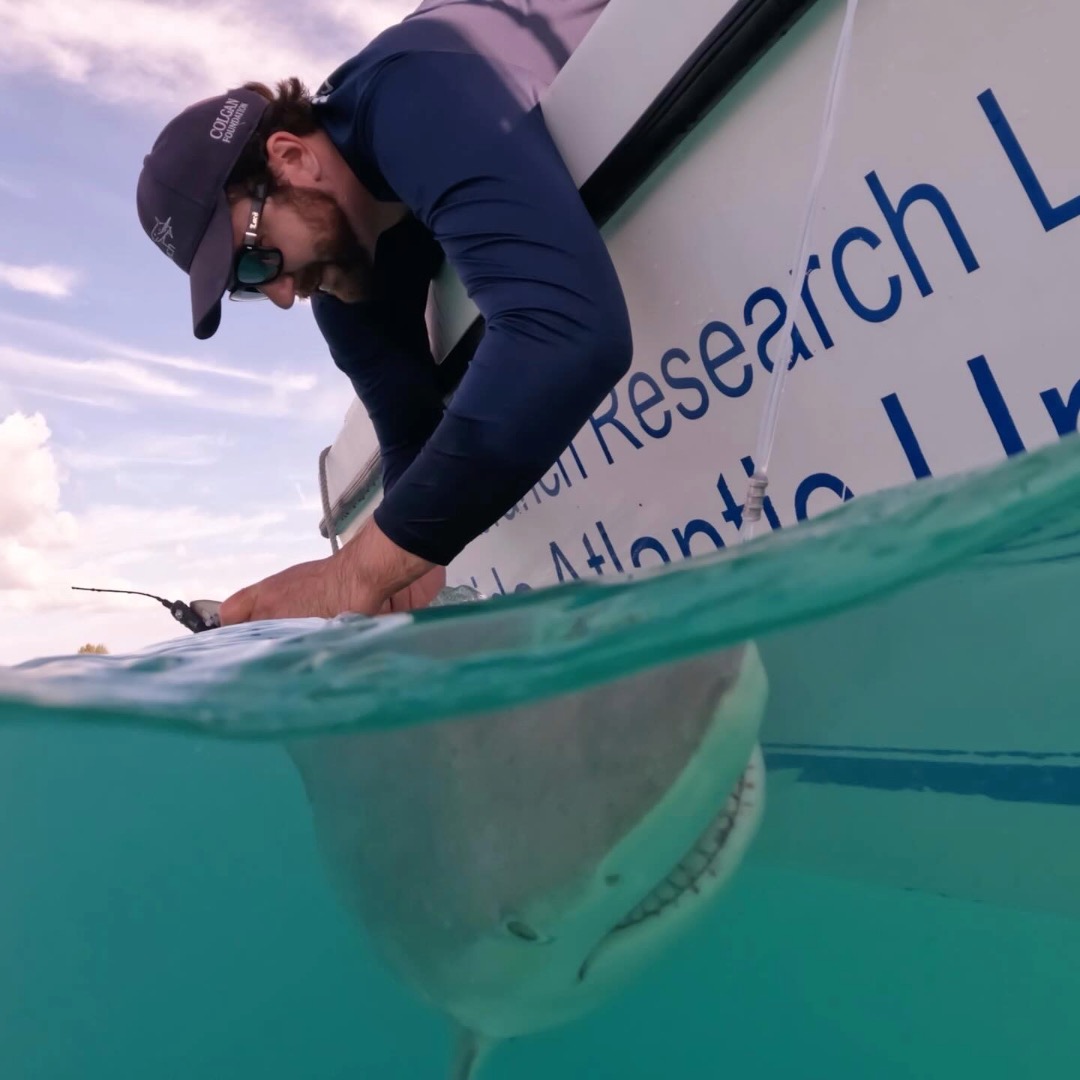Life Finds a Way…Back: Evaluating a Degraded Nursery and the Return of Some Inhabitants. – Technologist
Sarah Webb is a PhD candidate at Florida Atlantic University’s Harbor Branch Oceanographic Institute. Sarah was awarded the Florida Sea Grant Guy Harvey Fellowship in 2024.
Ever since I was young, I knew I wanted a life opposite of Disney’s Little Mermaid, Ariel — I wanted to be where the fish are! If given the choice to watch a shooting star or watch one little fish swim around a coral head, I would choose the fish every single time. My curiosity, love and passion for marine life led me down a path of multiple unexpected but beautiful moments, like witnessing the critically endangered smalltooth sawfish give birth during a routine assessment in a degraded estuary they once called home.
I received a BS in Biology and Environmental Studies from Chaminade University of Honolulu in 2011, and a MS in Marine Sciences from Savannah State University in 2016. I began my PhD pursuit in August 2021 at Florida Atlantic University’s Harbor Branch Oceanographic Institute. I have been fortunate enough to volunteer and intern with Hawaii Sea Grant, NOAA National Marine Sanctuaries and Georgia Conservancy. I was even named NOAA Gray’s Reef Volunteer of the Year in 2013 and was the first female volunteer diver, assisting with research aboard the R/V Nancy Foster.
 Although I have studied various species over the years, from phytoplankton to white sharks, my focus has been using acoustic telemetry, a means of tracking aquatic animals to answer different research questions. My master’s thesis at Savannah State University utilized acoustic telemetry to identify differences in habitat selection and temperature preferences of Atlantic Stingrays in a tidally influenced creek system. These findings were used to create a K-12 activity published in Science Activities.
Although I have studied various species over the years, from phytoplankton to white sharks, my focus has been using acoustic telemetry, a means of tracking aquatic animals to answer different research questions. My master’s thesis at Savannah State University utilized acoustic telemetry to identify differences in habitat selection and temperature preferences of Atlantic Stingrays in a tidally influenced creek system. These findings were used to create a K-12 activity published in Science Activities.
Since my master’s, I had the privilege to work with the Georgia Department of Natural Resources, Florida Fish and Wildlife Conservation Commission, and now, South Florida Water Management District. These organizations allowed me to sharpen my skills in fish biology, age and growth, histology, acoustic telemetry, and more. I have worked on projects with several estuarine dependent sport fish, grouper and snapper species, and several elasmobranchs, and contributed to scientific papers on snook and cownose ray migrations.
Through my work, I met my current advisor, Dr. Matthew Ajemian, at a FACT Network meetings. We realized that our overlapping study site and research interests were an opportunity to bridge the gap between state and collegiate research and collaborate on my dissertation together.
Taking data from ongoing FWC research, my first chapter revolves around the movement and distribution of sportfish, including juvenile goliath grouper, sheepshead, and spotted seatrout within the St. Lucie Estuary in association to freshwater inflow from Lake Okeechobee. Preliminary findings from this have been published as an appendix in the annual South Florida Water Management District’s South Florida Environmental Report. Thanks to this work, a new project was born at the district to continue monitoring important sportfish responses and flow regimes from Lake Okeechobee change over time.
However, things have not been easy or direct for some of the species we have been tracking. There are rising concerns about the loss of seagrass habitat and subsequently, the loss of spotted seatrout in the area. Additionally, the juvenile goliath grouper fishery has been open to limited harvest for the first time in decades, concerning dive enthusiasts about the overall status of the population and the economical importance of this fish.
 Therefore, the second chapter of my dissertation is focusing on the habitat use over time of the sheepshead, spotted seatrout, and juvenile goliath grouper. Using a long-term dataset from FWC’s Fisheries Independent Monitoring program, I am able to assess catch rates over time and associated habitats, and how the availability of those habitats may have changed over time due to anthropogenic or natural causes.
Therefore, the second chapter of my dissertation is focusing on the habitat use over time of the sheepshead, spotted seatrout, and juvenile goliath grouper. Using a long-term dataset from FWC’s Fisheries Independent Monitoring program, I am able to assess catch rates over time and associated habitats, and how the availability of those habitats may have changed over time due to anthropogenic or natural causes.
“Life finds a way”, as the infamous Dr. Ian Malcom from Jurassic Park once stated. And indeed, it has found a way back to a historic nursery habitat, where the smalltooth sawfish was once an abundant and permanent resident. Through collaboration with FWC Charlotte Harbor, and FAU-HBOI Fisheries Ecology Lab, I aim to assess the movement and distribution of small juvenile (less than 5 feet) smalltooth sawfish in the St. Lucie Estuary and adjacent southern Indian River Lagoon. This area once served as a nursery for this iconic species and over the years, thanks to the sawfish recovery hotline (1-844-SAWFISH), an uptick in reports and incidental catches indicate a nursery is reemerging in this area. Although extensive work has been conducted on Florida’s west coast by Dr. Gregg Poulakis and colleagues, very little is known about how this species is utilizing the degraded estuary on the southeast coast.
Identifying hotspots and high-use areas can lead to more informed restoration efforts and water management decisions. The protection and preservations of one species can lead to better estuary health for all inhabitants, including seagrasses and oysters. Sawfish research was conducted pursuant to NMFS ESA Permit No. 25864.
Although I have remained diligent to my overall goal of being a marine scientist, I wouldn’t have made it to where I have been without a bit of luck and good timing. I am eternally grateful to those who have let me jump on a boat with them, pull a net, reel in a fish, and do whatever was needed, so that I can continue to learn and grow my skills and network of amazing colleagues so that we can all continue to collaborate and explore in the name of science.



